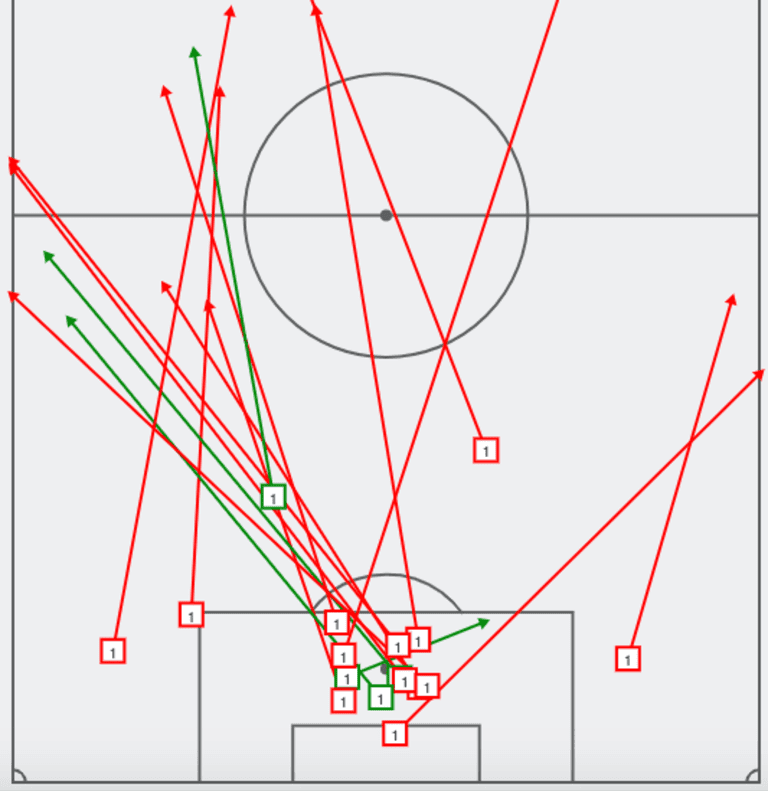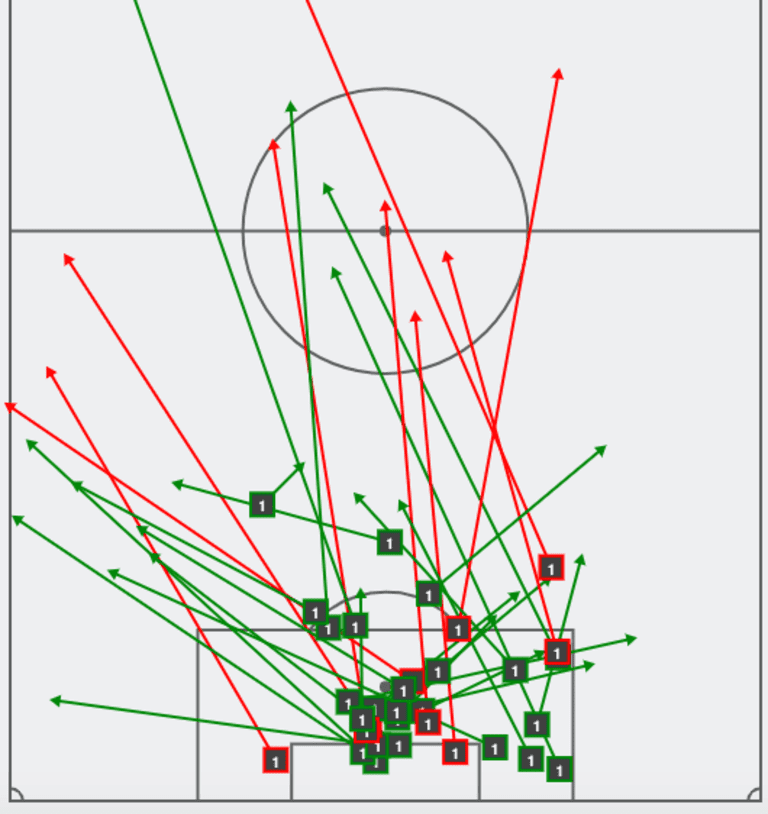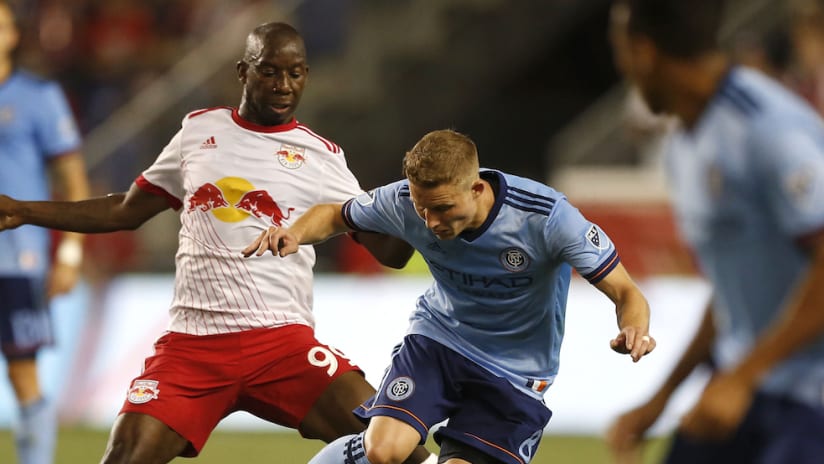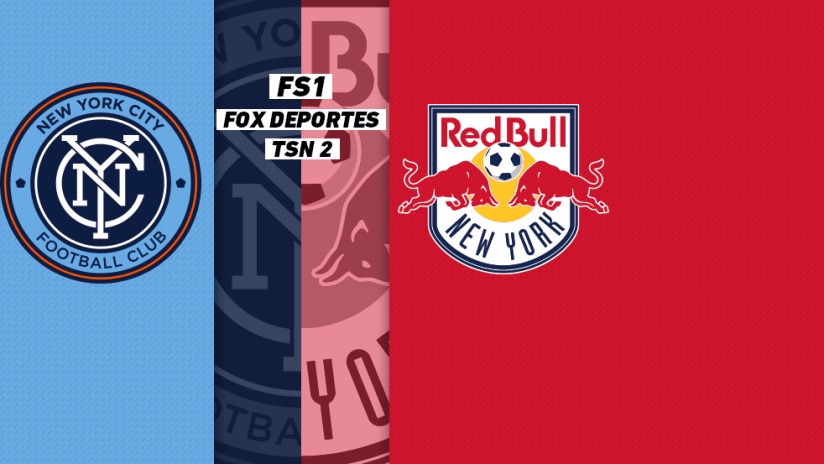NYCFC have struggled over the last three-plus years against the New York Red Bulls. The red side of New York had been 6-3-1 in MLS play (8-3-1 all-time), including the notorious 7-0 "Red Wedding" and a 4-0 Red Bulls stroll earlier this year, going into Sunday’s matchup at Yankee Stadium. New Cityzens boss, Dome Torrent, did something to change that.
Torrent adjusted the tactics in three clear ways, leading to a 1-0 victory for NYCFC.
First, NYCFC didn’t try to pass from the back through the Red Bulls’ press. Goalkeeper Sean Johnson and the center backs, Maxime Chanot and Alexander Callens, frequently bypassed the first line of Red Bulls defenders.
Here is Johnson’s pass chart from Sunday’s game:

And here's Johnson's chart from the last time NYCFC, under Patrick Vieira, played against the Red Bulls:

By my count, it was 16 complete passes under 30 yards in the first go-around compared to just one in the second meeting. Overall, NYCFC completed 375 passes on Sunday compared to 574 the previous time the teams played. It was a total avoidance - or betrayal, depending on your view of the game - to NYCFC’s previous core principles, but it served a needed purpose. The Red Bulls didn’t force the turnovers in NYC’s end that had led to goals in previous meetings.
Second, based on what we saw, Torrent prioritized winning duels. In previous meetings between the teams, Red Bulls had physically dominated NYC. They used Tyler Adams, Aaron Long, Tim Parker, and Sean Davis to overpower NYCFC, win first challenges, and get to second balls quicker.
While every coach verbally tells his team to win 50/50 balls, it’s generally left as an “attitude” concept rather than a tactical nuance; we rarely see a game plan designed to put players in specific positions to win duels. The Red Bulls do it - it’s the backbone of their system - so Torrent applied specific attention to it as well. On Sunday, Johnson's pass chart was heavily weighted to the left side of the field.
That’s where Ben Sweat (6-foot-2), and Rodney Wallace (5-foot-11), were deployed against Red Bulls’ right back Connor Lade (5-foot-7). Conversely, Maxi Moralez, NYCFC’s shortest player on the field, played center striker and matched up against Long and Parker, and NYCFC avoided duel-likely moments in that area of the field.
Not every ball went to the left and not every duel took place on Sweat/Wallace’s side of the field, but most did, and winning begets winning. When a player sees a teammate winning challenges, that can be contagious. Whereas NYCFC won only 46 percent of the duels in the first meeting, NYCFC won 51 percent this time. NYCFC went away from their bread-and-butter, but they also took away the Red Bulls’ usual advantage.
Third, Torrent told his players to go direct immediately when they won the ball. It’s a tactic that RBNY execute better than anyone else in the league, and NYCFC tried to out-Red Bulls the Red Bulls.
After the match, midfielder Alexander Ring told reporters, “I prefer having the ball all the time and touching the ball 100 times a game. It’s not always possible. They play a very intense, high press game. And sometimes you just have to be direct to break that press because otherwise, you’re going to play yourself into trouble. I think we saw that the first two games. And I think we did that better than before, today.”
RBNY throw numbers forward both in the press and as soon as they win the ball, and when numbers get thrown forward, it leaves space behind the defenders. NYCFC tried to exploit that space before the Red Bulls could adjust:
That's a giveaway we wouldn’t usually see from NYCFC teams of old, but it's one you can live with. It avoided the Red Bulls’ counter press and the payoff would have been huge.
This all combined to offer a new look from NYCFC, and one fans of build-up play might not have enjoyed watching. But NYCFC won, which is something they couldn’t say very often about this rivalry.











